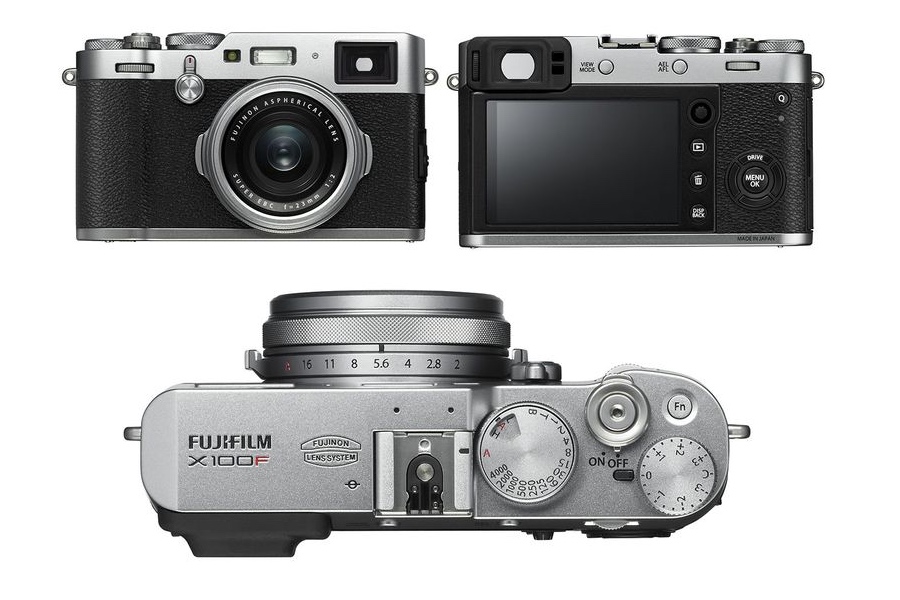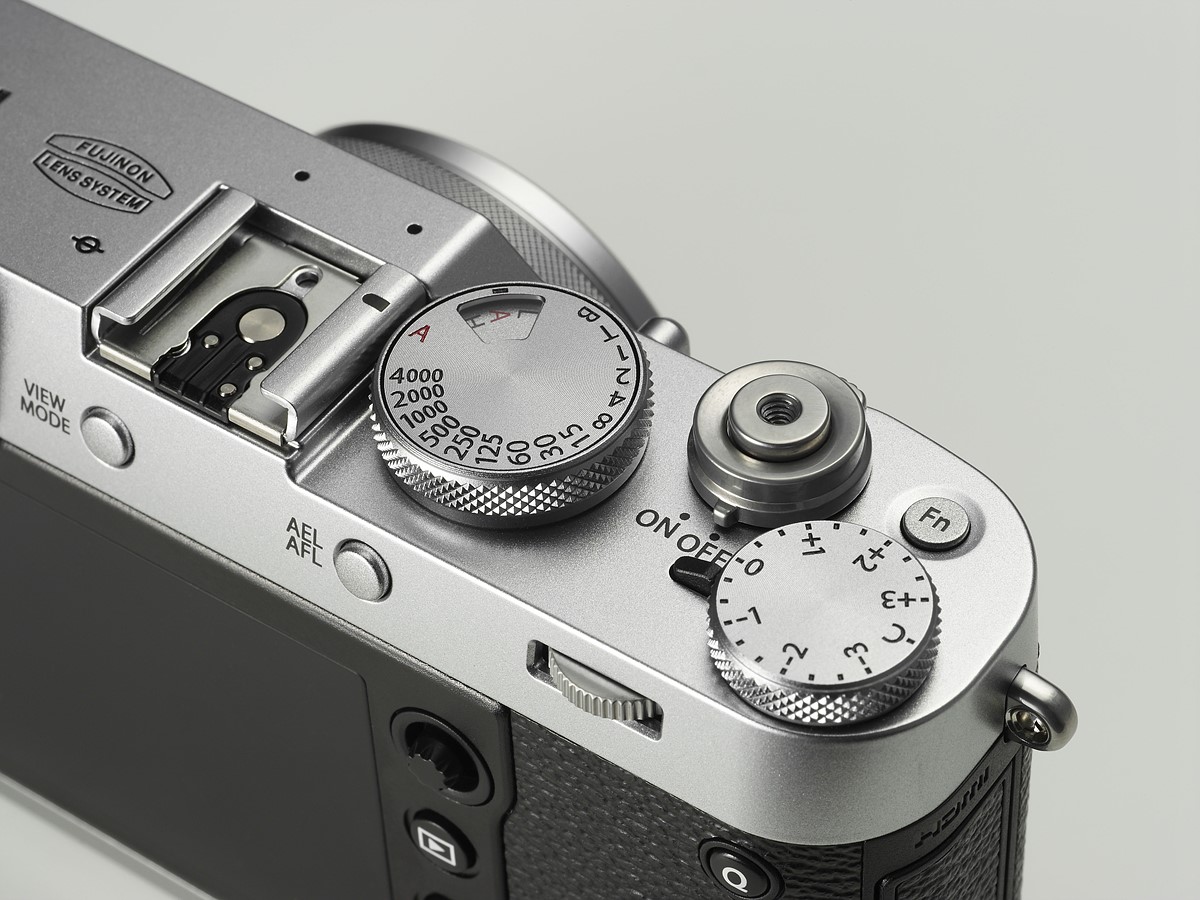Fujifilm has unveiled the X100F; the fourth in its series of X100 rangefinder-style cameras with improved features. So here is a Fujifilm X100F vs X100T vs X100S vs X100 comparison that shows the highlights to help you for decision.
We are sure that only the X100T specs comparison will suffice for existing Fuji users. But we thought that for all users who are curious about Fuji’s latest premium digital compact camera, let’s put together the features of all the members of the series side by side.
The fourth-generation Fuji X100F now gains a 24.3-megapixel APS-C X-Trans CMOS III image sensor. This sensor also offers a native base ISO of 200 up to ISO 12,800. Sensitivity can be expanded down to 100 and up to a maximum of 51,200.
At the core of the camera, the AF system has been revamped. The number of focusing points has been dramatically expanded from 49 in previous models to 91 (up to 325 points). Approx. 40% of the imaging area is covered with phase detection AF pixels to form a fast and precise phase detection AF area that can be used in a variety of scenes.
The Fuji X100F does offer up to +/-5 EV exposure compensation, which can be accessed by setting the EC dial to the “C” setting and adjusting the compensation with the on-screen menu.
Specifications Comparison of Fujifilm X100F vs X100T vs X100S vs X100 Cameras
| X100F | X100T | X100S | X100 | |
|---|---|---|---|---|
| Announced | January 19, 2017 | September 10, 2014 | January 7, 2013 | February 8, 2011 |
| Release date | February 16, 2017 | Fall 2014 | March, 2013 | March, 2011 |
| Price (MSRP) |
$1,299 | $1,299 | Discontinued $900 used | Discontinued $600 |
| Sensor | 24.3MP X-Trans CMOS III sensor | 16.3MP APS-C X-Trans CMOS II sensor | 16.3MP APS-C X-Trans CMOS II sensor | 12.3MP Bayer CMOS sensor |
| Processor | X-Processor Pro | EXR Processor II | EXR Processor II | EXR Processor I |
| Viewfinder | Advanced hybrid viewfinder, with electronic rangefinder (ERF) | Advanced hybrid viewfinder, with electronic rangefinder (ERF) | Hybrid optical electronic viewfinder | Hybrid optical electronic viewfinder |
| OVF coverage | 92% | 92% | 90% | 90% |
| OVF parallax correction | After focus is acquired during autofocus and real time on manual focus | After focus is acquired during autofocus and real time on manual focus | After focus is acquired in autofocus | After focus is acquired in autofocus |
| EVF resolution | 2,360,000 pixel LCD viewfinder | 2,360,000-dot High Definition LCD panel | 2,360,000-dot High Definition LCD panel | 1,440,000-dot |
| ISO | 200 to 12800 | 200 – 6400 | 200 – 6400 | 200 – 6400 |
| Improved viewfnder interface | Yes | Yes | No | No |
| Autofocus | Faster Intelligent Hybrid AF | Faster Intelligent Hybrid AF | Fast Intelligent Hybrid AF | Slower Contrast AF |
| AF points | 91 | 49 | 49 | 49 |
| Exposure Compensation | ±5EV | ±3EV | ±2EV | ±2EV |
| Interval Shooting | Yes | Yes | No | No |
| Start-up Time | 0.5 seconds | 0.5 seconds | 0.5 seconds | “Fast” |
| Shutter lag | 0.1 seconds | 0.1 seconds | 0.1 seconds | “Low” |
| Continuous Shooting | Up to 8 fps at 24.3 MP for up to 60 frames in JPEG format | 6 fps to a maximum of 25 frames (JPEG) or 3 to card capacity | Up to 6 fps for up to 31 frames | 3 or 5 fps to a maximum of 10 frames (JPEG) |
| Maximum shutter speed | Mechanical – 4sec. to 1/32000sec.[P mode], Electronical – 30sec. to 1/32000sec.[All modes] | 1/32,000 of a second electronic, 1/4000 of a second mechanical at f/8-16, 1/2000 at f/4-5/6, 1/1000 at f/2-2.8 | 1/4000 of a second mechanical at f/8-16, 1/2000 at f/4-5/6, 1/1000 at f/2-2.8 | 1/4000 of a second mechanical at f/8-16, 1/2000 at f/4-5/6, 1/1000 at f/2-2.8 |
| Lens | 23mm f/2.0 fixed lens (35mm equivalent) | 23mm f/2.0 fixed lens (35mm equivalent) | 23mm f/2.0 fixed lens (35mm equivalent) | 23mm f/2.0 fixed lens (35mm equivalent) |
| LCD | 3.0-inch (1,040-dot) | 3.0-inch (1040K-dot) | 2.8-inch (460K-dot) | 2.8-inch (460K-dot |
More details
The most obvious difference is the new front control dial. The X100F’s rear control layout has been simplified compared to the X100T. The controls are now arranged on the right of the display, with an AF selection joystick added at upper-right. Another change is the addition of an integrated ISO dial to the shutter speed dial on the X100F’s top-plate.
The X100F uses the same NP-W126S that’s used in the X-Pro2, X-T2 and X-T20. Battery life is rated at between 270 and 390 shots. Let’s dig more about the Fujifilm X100F vs X100T vs X100S vs X100 specs comparison.
| X100F | X100T | X100S | X100 | |
|---|---|---|---|---|
| Enhanced Q Menu | Customizable Q Menu | Customizable Q Menu | Standard Q Menu | Standard Q Menu |
| Rear command input | Dial | Dial | Toggle | Toggle |
| Classic Chrome | Yes | Yes | No | No |
| Battery life | Approx. 270 frames [EVF] / 390 frames [OVF] | Approx. 330 frames (up to 700 frames when OVF POWER SAVE MODE is ON) | 330 photos per charge | 300 photos per charge |
| Flash | Super Intelligent Flash (30cm) | Super Intelligent Flash (50cm) | Super Intelligent Flash | Super Intelligent Flash |
| Close Focus | 10cm | 10cm | 10cm | 10cm |
| Focus Peaking | Yes – with colours | Yes – with colours | Yes – white only | Yes – white only |
| Video | 1920 x 1080: 60 fps, 30 fps | 1920 x 1080: 60 fps, 30 fps | 1920 x 1080: 60 fps, 30 fps | 1920 x 1080: 60 fps, 30 fps |
| WiFi Capabilities | Yes | Yes | No | No |
| Size | 126.5 x 74.4 x 53.9 mm | 126.5 x 74.4 x 53.9 mm | 126.5 x 74.4 x 53.9 mm | 126.5 x 74.4 x 53.9 mm |
| Check the camera stores for availability | ||
|---|---|---|
| Fujifilm X100F | $1,299 | Amazon | B&H | Adorama |


